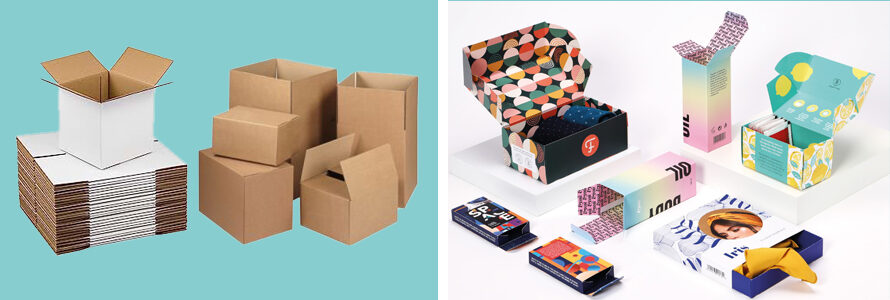
Gone are the days of using dull brown Packaging Boxes or pretentious post office mailers to deliver your products. With the rise in competition, brands have adopted many unique and innovative ways to attract customers and boost sales. One of the most effective strategies to date is personalizing their product packaging.
Personalization refers to tailoring the packaging of your goods for individual purchases based on the region, demographics, or consumer behavior. It helps brands create an emotional link with their customers and leverage it for business growth. While standard packaging can save you the cost of extra designing and customization, it can make your products look ordinary in front of others.
This blog post will explore the benefits of personalization and compare them with the use of standard packaging boxes. Let’s get into the details.
Custom Vs Standard Packaging: What’s the difference?
Custom-made packaging with a hint of personalization means making every package you send special to its recipient. While, on the other hand, standard packaging means the use of typical plain packaging boxes or mailers to store and ship your goods to its user. Both the packaging options have their significant differences; however, personalized packaging wins the race in providing a better consumer experience and establishing brand identity.
Here are some major points that distinguish standard packaging from personalized packaging boxes and which one is right for your business.
1. Unforgettable First Impressions:
Personalized packaging allows brands to make a striking first impression. By incorporating unique designs, colors, and materials, businesses can create a sense of anticipation and excitement when customers receive their packages. For instance, luxury fashion brands like Gucci and Louis Vuitton use bespoke packaging adorned with their iconic logos and signature motifs. Opening such a package becomes an experience in itself, reinforcing the brand’s exclusivity and desirability.
On the other side, standard packaging offers nothing great in the sense of creating a good first impression but, it protects and stores your products securely. These boxes are versatile and can store a product of any shape or size.
2. Brand Storytelling:
Custom packaging provides an opportunity for brands to tell their story visually. Businesses can communicate their values, mission, and personality through carefully crafted packaging elements. For example, the sustainable beauty brand uses eco-friendly packaging from recycled materials to reflect its environmental commitment. By aligning its packaging with its brand ethos, it can establish a deeper connection with eco-conscious consumers who appreciate its sustainability efforts.
Typical packaging with brown boxes or mailers does not communicate anything about the brand. However, you can customize them with custom stickers and labels to deliver your brand identity.
3. Personalization and Emotional Connection:
Adding personal touches, such as handwritten notes, customized labels, or tailored inserts, creates a sense of exclusivity and strengthens the emotional bond between the brand and its customers. Curating personalized packages based on individual preferences, make customers feel valued and understood. While standard packaging does not appeal to customers’ cognition and may deliver an ordinary brand experience.
4. Influencing Perceived Value:
Tailor-made packaging with personalized elements can elevate the perceived value of products. By investing in high-quality materials and sophisticated packaging designs, brands can position their offerings as premium and worth paying a higher price for.
For example, Apple’s sleek and minimalist packaging for its devices exemplifies this concept. The attention to detail and luxurious feel of the packaging aligns with the brand’s reputation for producing top-tier, cutting-edge products. While if you imagine standard packaging for apple products, it would not resonate with the customers’ expectations and may lower their purchase rate.
5. Word-of-Mouth Marketing:
Strategic personalized packaging has the potential to generate buzz and encourage social sharing. Unique and Instagram-able packaging designs can motivate customers to showcase their unboxing experiences on social media, effectively becoming brand ambassadors. While having standard packaging might not be enticing enough to put it on the internet which results in the loss of a great opportunity to expand the reach and increase brand exposure.
For example, Glossier, a beauty brand known for its minimalist aesthetic, successfully leverages this phenomenon by creating packaging that is instantly recognizable and highly shareable, amplifying its reach and attracting new customers. It has 100x the exposure on social media than other beauty brands due to its continuous branding efforts and personalized product packaging.
Conclusion:
Personalized packaging has fundamentally transformed how we perceive and engage with brands. It goes beyond mere protection and containment of products; it has become a powerful tool for brand differentiation, storytelling, personalization, and creating emotional connections with consumers. While on the hand standard packaging lacks such edges. It has the great benefit of saving the packaging cost for brands that are just stepping into the industry.
Through careful attention to packaging design and materials, businesses can leave a lasting impression, influencing brand perception, and ultimately driving customer loyalty and advocacy.


